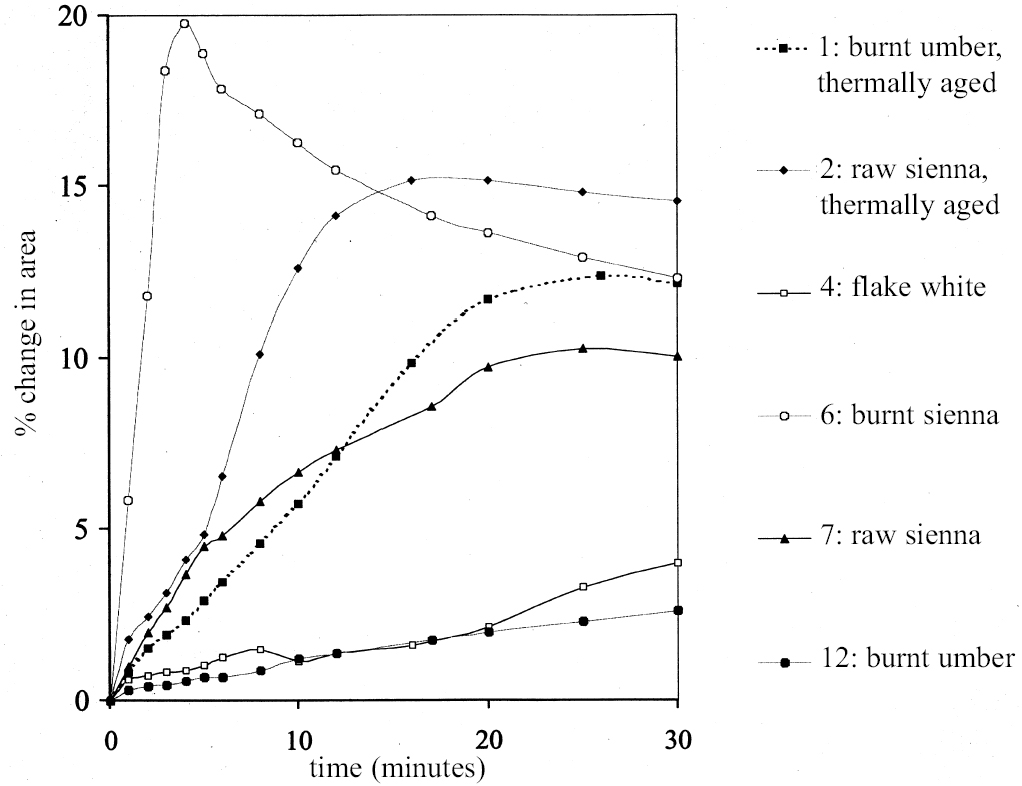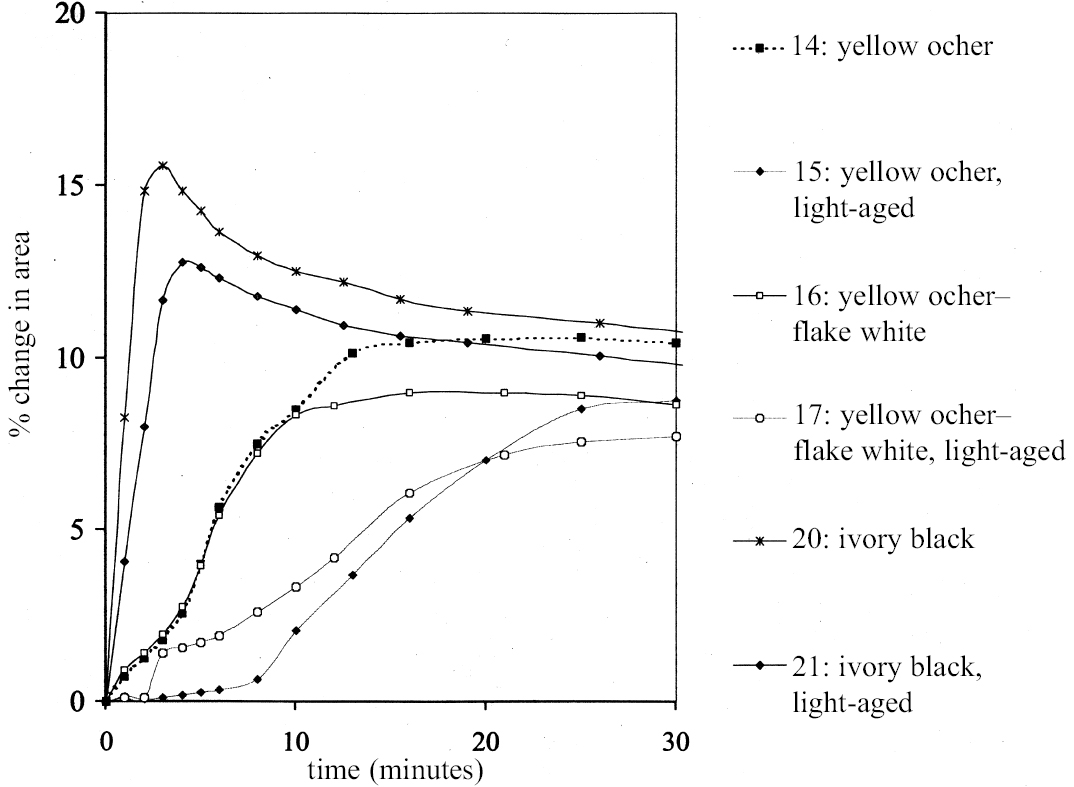THE SWELLING OF ARTISTS' PAINTS IN ORGANIC SOLVENTS. PART 1, A SIMPLE METHOD FOR MEASURING THE IN-PLANE SWELLING OF UNSUPPORTED PAINT FILMSALAN PHENIX
4 SWELLING OF PAINT FILMS OF DIFFERENT TYPESFigures 6 and 7 show the swelling curves, up to t = 30 minutes, obtained for samples from reference paint films of different types when immersed in ethanol. These samples come from three separate sets prepared from conventional artist's paints based on drying oils. Included are paints that are naturally dark-aged and paints subjected to some form of accelerated aging, either by exposure to high-intensity light or to heat. They are all essentially proprietary artist's oil paints, or mixtures thereof, cast as films of uniform thickness on polyester film supports. The paints vary significantly in their constitution and consistency. Small fragments of paint can be readily removed from the polyester film as required for each experiment. The experiments reported here refer to a selection of 12 different paint films from the above sets, each defined by number (1, 2 etc.). The details of each individual paint film type are given in table 1. It can be seen immediately that paint films vary appreciably in both the rate and the extent of swelling in a given solvent. Some of the paint films (e.g., 4: flake white, and 12: burnt umber) still had not reached equilibrium after 30 minutes, and both these paint films showed only low degrees of swelling in ethanol, < 5% in area. In contrast, some of the other paint films (e.g.,6: burnt sienna, 20: ivory black unexposed to light, and 21: ivory black exposed to light) showed very rapid swelling, maximum swelling being reached within 5–6 minutes. Thereafter these paint films contract from the maximum degree of swelling to an equilibrium value. Both these factors suggest paint films that are lightly cross-linked, with high medium content and an abundant soluble phase that is susceptible to extraction by the solvent. The other paint films swell progressively, but at a slower rate, to the equilibrium value without passing through such a distinct contraction stage. It is interesting to note that most of the paints composed of iron oxide earths, especially the siennas, show moderate-to-high degrees of swelling. The very high solubility of these sienna paints has been demonstrated previously (Erhardt and Tsang 1990, table 2, 96; Hedley et al. 1990). The difference between the two sets of samples of Winsor & Newton raw sienna (2 and 7) is explained partly by their different aging histories and partly by their thicknesses. The same also applies to the two burnt umber paint films (1 and 12). It is useful to note at this point the issue of paint film aging insofar as this influences swelling behavior. It can be seen from figure 4 that the paints that have been aged by exposure to light show lower degrees of equilibrium swelling and a slower rate of swelling compared to their unexposed counterparts (compare, for example, the curves for 14 vs. 15, 16 vs. 17, and 20 vs. 21). This finding applies both for the virgin and for the preleached films. This pattern has been found with virtually all solvents and is presumably due to several factors: increased paint density in the lightexposed samples, lower organic content, and, possibly, higher cross-link density. It is possible, also, that the presence of a mobile, soluble phase within the organic binder actively promotes solvent penetration in the paint binder network. Paint films 16 and 17, which of the group reported here are intermediate in character, have been the subjects of more extensive investigations reported in Phenix 2002. Given the variability in the swelling behavior of paint films of different kinds demonstrated above, it follows that comparison of swelling response between one paint film and another presents certain difficulties unless the samples share a common origin. However, the variation in swelling response of a single paint film type with solvents of different kinds gives considerable insight into the chemical nature of the paint and provides the basis of a framework to enable the conservator to assess and control risk in the process of cleaning.
|

